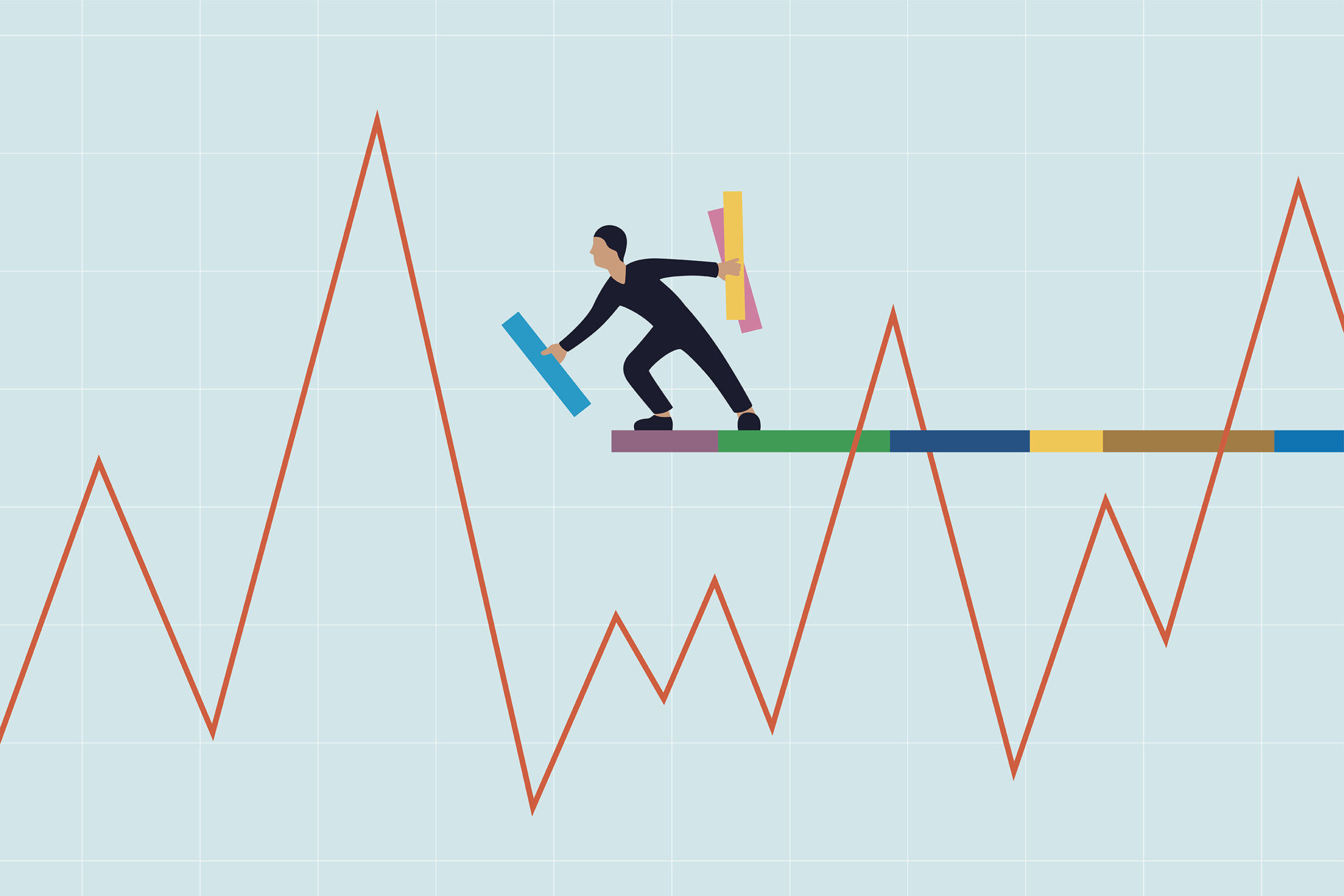
Volatility can be a wild ride, especially in financial markets. But what exactly is it? Volatility measures how much the price of an asset, like stocks or cryptocurrencies, fluctuates over time. Imagine a roller coaster with steep climbs and sudden drops—that's high volatility. On the other hand, a kiddie ride with gentle slopes represents low volatility. Understanding this concept helps investors gauge risk and make informed decisions. Whether you're a seasoned trader or just curious, knowing these 34 facts about volatility will give you a clearer picture of what drives market swings and how to navigate them. Buckle up, it's going to be an enlightening ride!
Key Takeaways:
- Volatility measures how much prices change. High volatility means big changes, low means stable. It's influenced by events, emotions, and more.
- Investors can manage volatility with strategies like diversification, hedging, and staying informed. Volatility creates opportunities and affects different sectors differently.
Understanding Volatility
Volatility is a term often used in finance and investing. It refers to the degree of variation in the price of a financial instrument over time. High volatility means prices can change dramatically in a short period, while low volatility indicates more stable prices. Let's dive into some fascinating facts about volatility.
-
Volatility is measured by standard deviation. This statistical measure shows how much a set of prices deviate from the average price.
-
The VIX index is known as the "fear gauge." It measures the market's expectation of volatility over the next 30 days.
-
Volatility can be caused by external events. Natural disasters, political instability, and economic reports can all impact market volatility.
-
High volatility often occurs during economic downturns. Investors tend to panic and sell off assets, leading to rapid price changes.
-
Low volatility markets are considered more predictable. Investors feel more confident in making long-term investments.
-
Options pricing is heavily influenced by volatility. Higher volatility increases the price of options due to the greater potential for profit.
-
Volatility clustering is a common phenomenon. Periods of high volatility tend to be followed by more high volatility, and the same goes for low volatility.
-
Historical volatility looks at past price movements. It helps investors understand how much an asset's price has fluctuated in the past.
-
Implied volatility is forward-looking. It reflects the market's expectations for future price movements.
-
Volatility is not the same as risk. While they are related, risk involves the potential for loss, whereas volatility measures price fluctuations.
Factors Influencing Volatility
Several factors can influence the level of volatility in the market. Understanding these can help investors make better decisions.
-
Economic indicators play a significant role. Reports on GDP, unemployment, and inflation can cause market volatility.
-
Interest rates impact volatility. Changes in interest rates can affect borrowing costs and investment returns, leading to price fluctuations.
-
Corporate earnings reports can cause volatility. Positive or negative earnings surprises can lead to significant price changes.
-
Geopolitical events are major volatility drivers. Wars, elections, and trade negotiations can create uncertainty in the markets.
-
Market sentiment affects volatility. Investor emotions and perceptions can lead to irrational buying or selling.
-
Liquidity levels influence volatility. Low liquidity can lead to larger price swings as fewer buyers and sellers are available.
-
Technological advancements can impact volatility. High-frequency trading and algorithmic trading can lead to rapid price changes.
-
Regulatory changes can cause volatility. New laws or regulations can affect market conditions and investor behavior.
-
Commodity prices can influence market volatility. Changes in the prices of oil, gold, and other commodities can impact related stocks and sectors.
-
Currency fluctuations can lead to volatility. Exchange rate changes can affect international trade and investment.
Strategies to Manage Volatility
Investors often use various strategies to manage and mitigate the effects of volatility. Here are some common approaches.
-
Diversification reduces risk. Spreading investments across different asset classes can help manage volatility.
-
Hedging with options can protect against losses. Buying put options or selling call options can offset potential declines in asset prices.
-
Using stop-loss orders can limit losses. These orders automatically sell an asset when it reaches a certain price, preventing further declines.
-
Investing in low-volatility funds can provide stability. These funds focus on stocks with historically low price fluctuations.
-
Dollar-cost averaging spreads out investments. Regularly investing a fixed amount can reduce the impact of market volatility.
-
Maintaining a long-term perspective can help. Focusing on long-term goals rather than short-term fluctuations can reduce stress and improve decision-making.
-
Staying informed about market conditions is crucial. Keeping up with news and economic reports can help investors anticipate and react to volatility.
-
Using technical analysis can identify trends. Analyzing price charts and patterns can help predict future price movements.
-
Rebalancing portfolios can maintain desired risk levels. Regularly adjusting asset allocations can keep a portfolio aligned with an investor's risk tolerance.
-
Avoiding emotional decisions is essential. Sticking to a well-thought-out investment plan can prevent panic selling during volatile periods.
Interesting Facts About Volatility
Here are some additional intriguing facts about volatility that you might find surprising.
-
Volatility can create opportunities. Savvy investors can profit from price swings by buying low and selling high.
-
Some sectors are more volatile than others. Technology and biotech stocks tend to have higher volatility compared to utilities and consumer staples.
-
Volatility can affect bond prices. Interest rate changes and economic conditions can lead to fluctuations in bond prices.
-
Cryptocurrencies are known for extreme volatility. Digital currencies like Bitcoin can experience massive price swings in short periods.
Final Thoughts on Volatility
Understanding volatility helps in making better investment decisions. It’s a measure of how much the price of an asset fluctuates over time. High volatility means big price swings, while low volatility indicates more stable prices. Knowing this can guide you in choosing investments that match your risk tolerance.
Volatility isn’t just about risk; it’s also about opportunity. During volatile times, prices can drop significantly, offering chances to buy assets at lower prices. Conversely, prices can rise quickly, providing opportunities to sell at a profit.
Keep an eye on market indicators like the VIX (Volatility Index) to gauge market sentiment. Remember, no investment is without risk, but understanding volatility can help you navigate the ups and downs more effectively. Stay informed, stay patient, and use volatility to your advantage.
Frequently Asked Questions
Was this page helpful?
Our commitment to delivering trustworthy and engaging content is at the heart of what we do. Each fact on our site is contributed by real users like you, bringing a wealth of diverse insights and information. To ensure the highest standards of accuracy and reliability, our dedicated editors meticulously review each submission. This process guarantees that the facts we share are not only fascinating but also credible. Trust in our commitment to quality and authenticity as you explore and learn with us.


